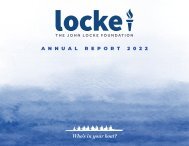Energy Crossroads: Exploring North Carolina’s Two Energy Futures
North Carolina’s Clean Energy Plan, a proposal put together by the Department of Environmental Quality at the behest of Governor Roy Cooper, calls for a 70-percent reduction of greenhouse gas emissions from electricity by 2030 and carbon neutrality by 2050. Duke Energy has submitted Integrated Resource Plans that include pathways to the Clean Energy Plan targets. Duke Energy’s Portfolio D most resembles the Clean Energy Plan, deploying wind, solar, and battery storage on an unprecedented scale. This report assesses North Carolina’s existing electricity portfolio, analyzes the changes proposed by Duke Energy’s Portfolio D, and compares that scenario to alternatives that utilize nuclear energy and natural gas to achieve emissions reduction rather than the Clean Energy Plan’s preferred wind, solar, and battery storage.
North Carolina’s Clean Energy Plan, a proposal put together by the Department of Environmental Quality at the behest of Governor Roy Cooper, calls for a 70-percent reduction of greenhouse gas emissions from electricity by 2030 and carbon neutrality by 2050. Duke Energy has submitted Integrated Resource Plans that include pathways to the Clean Energy Plan targets. Duke Energy’s Portfolio D most resembles the Clean Energy Plan, deploying wind, solar, and battery storage on an unprecedented scale.
This report assesses North Carolina’s existing electricity portfolio, analyzes the changes proposed by Duke Energy’s Portfolio D, and compares that scenario to alternatives that utilize nuclear energy and natural gas to achieve emissions reduction rather than the Clean Energy Plan’s preferred wind, solar, and battery storage.
Create successful ePaper yourself
Turn your PDF publications into a flip-book with our unique Google optimized e-Paper software.
34 ENERGY CROSSROADS
“The Duke
Energy IRPs
consist of six
portfolios,
each offering
a different
electricity future
for the state
through 2035.”
line, they are mirror-image documents. For
the purposes of this report, the documents
will be referred to jointly as “the Duke Energy
IRPs,” “the Duke IRPs,” or, simply, “the IRPs.”
The Duke Energy IRPs must be viewed in
the context of the electricity policies and the
2019 Clean Energy Plan described above.
Duke Energy, in its position as a state-regulated
monopoly, largely builds its plans around
existing and anticipated policy.
As Duke Energy explains on its website, it “applies
three primary objectives of increasingly
clean, reliable, and affordable [electricity] to
guide its IRP planning process, and considers
and compares resource portfolio alternatives to comply with policy
objectives.” Duke Energy notes in the IRPs, “In North Carolina, Duke Energy
is an active participant in the state’s Clean Energy Plan stakeholder
process, which is evaluating policy pathways to achieve a 70% reduction
in greenhouse gas emissions from 2005 levels by 2030 and carbon
neutrality for the electric power sector by 2050.” While Duke Energy has
announced a corporate commitment to achieving net-zero emissions by
2050, in line with Governor Cooper’s agenda, it lags slightly behind the
state with its corporate commitment to reduce CO 2
emissions 50-percent
below 2005 levels by 2030.
The Duke Energy IRPs consist of six portfolios, each offering a different
electricity future for the state through 2035. All six scenarios would see
Duke Energy achieve its 2030 goal of a 50-percent from baseline CO 2
reduction.
This report will describe each, but pay closest attention to the scenario
(Portfolio D) that most clearly reflects the policy preferences of Governor
Cooper and DEQ. Duke Energy describes Portfolio D as illustrating a potential
pathway to the Clean Energy Plan goal of a 70-percent reduction
by 2030 and maps high deployment of wind energy. This report will then











